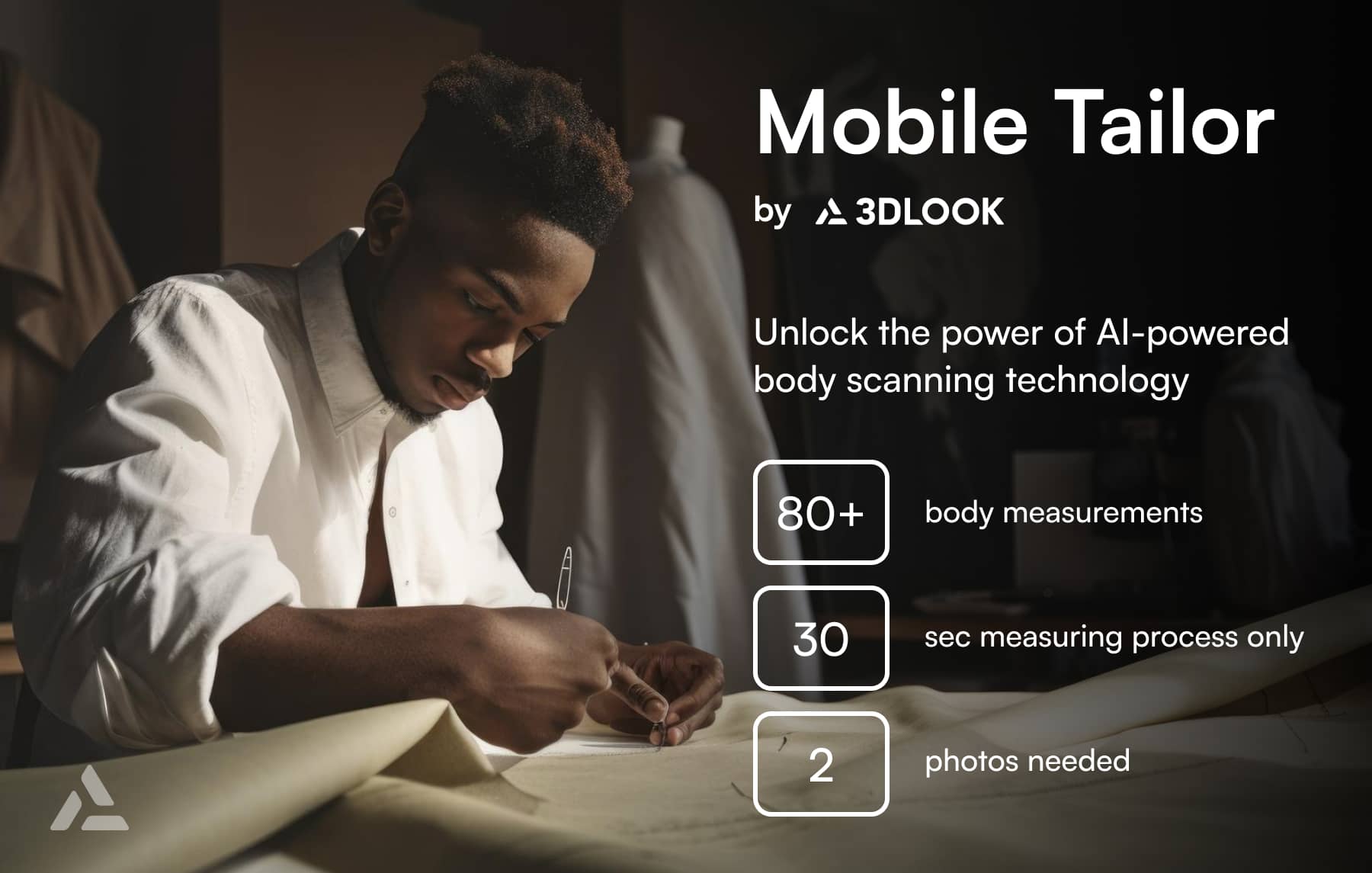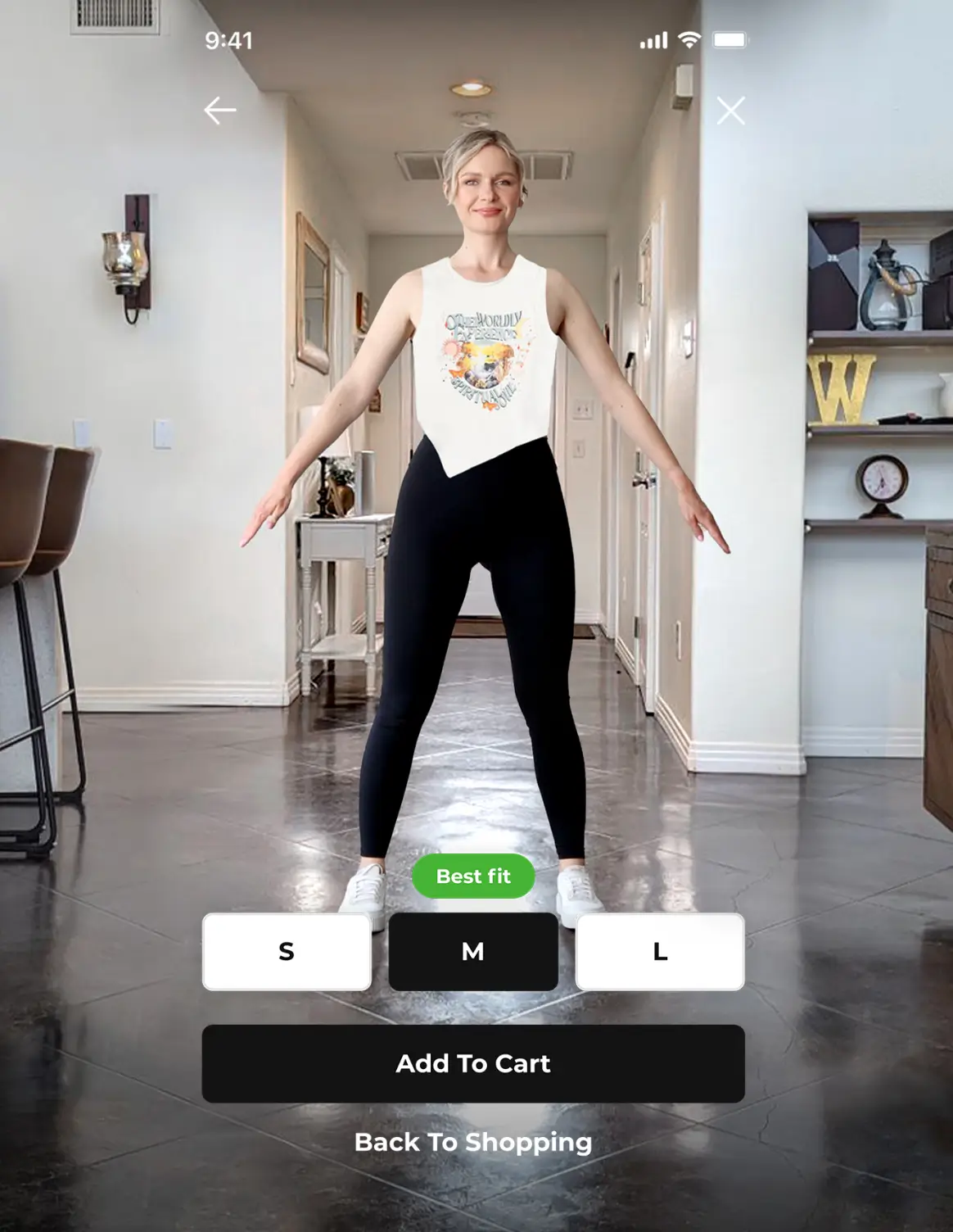Key takeaways:
- Establish a strong online and social media presence, utilizing SEO, user-friendly website design, and engaging platforms like Instagram, TikTok, and Facebook to connect with and expand your audience.
- Leverage content marketing through blogging, video content, and storytelling to build emotional connections, trust, and brand loyalty, ensuring your fashion brand resonates with consumers.
- Employ innovative marketing strategies, including email marketing segmentation and automation, targeted advertising, influencer collaborations, UGC, and loyalty programs to boost engagement, conversions, and customer advocacy.
- Adopt technologies like virtual fitting solutions and 3D design tools to enhance customer experience and stay ahead in the market.
Fashion Retail Marketing Pitfalls & Solutions
As with any business venture, clothing brands face common challenges in today’s market. Low brand awareness, intense competition, and stagnant sales are some of the hurdles that entrepreneurs need to overcome. However, every challenge presents an opportunity, and by understanding the pitfalls and implementing suitable solutions, you can propel your brand toward success.
Low brand awareness
One of the major pitfalls in fashion retail marketing is low brand awareness. The fashion industry is saturated with countless brands, so building brand recognition among your target audience is crucial. Invest in a comprehensive branding strategy that conveys your brand’s unique selling proposition.
Building brand awareness is a multifaceted process that requires careful planning and execution. One effective way to increase brand recognition is through strategic partnerships with influencers and celebrities who align with your brand’s values and aesthetics. Collaborating with popular fashion bloggers or social media influencers can expose your brand to a wider audience and generate buzz.
Additionally, consider leveraging social media platforms to engage with your target audience. Create compelling content that showcases your brand’s personality and values. Encourage user-generated content by running contests or campaigns encouraging customers to share their experiences with your brand. This not only helps in building brand awareness but also fosters a sense of community among your customers.
Competition

With numerous clothing brands vying for attention, distinguishing yourself from the competition is essential. Identify your brand’s unique strengths and develop a compelling brand story.
One way to stand out from the competition is by focusing on your brand’s unique selling proposition (USP). Determine what sets your brand apart and emphasize it in your marketing efforts. Whether it’s your commitment to sustainability, innovative design, or exceptional quality, ensure your USP is clearly communicated to your target audience.
Another effective strategy is to create a compelling brand story that resonates with your customers. Share the inspiration behind your brand, the journey you’ve taken to get where you are, and the values that drive your business. Connecting with your audience emotionally can build a loyal customer base that sees your brand as more than just a clothing label.
Stagnant Sales
In an ever-changing market, clothing brands must adapt to evolving consumer trends and preferences. Regularly analyze sales data, customer feedback, and market trends to identify areas for improvement and seize new opportunities.
When faced with stagnant sales, it’s important to take a data-driven approach to identify the root causes and potential solutions. Analyze your sales data to identify patterns and trends. Are there specific products or categories that are underperforming? Are there certain demographics or geographic regions where your brand is not resonating?
Customer feedback is another valuable source of information. Engage with your customers through surveys, focus groups, or social media listening to understand their needs, preferences, and pain points. This insight can help refine your product offerings, improve customer experience, and drive sales growth.
Furthermore, keep a close eye on market trends and consumer behavior. Fashion is an ever-evolving industry, and staying ahead of the curve is crucial. Monitor fashion shows, industry publications, and social media platforms to identify emerging trends and adapt your product offerings accordingly. By being proactive and agile, you can capitalize on new opportunities and stay relevant in the market.
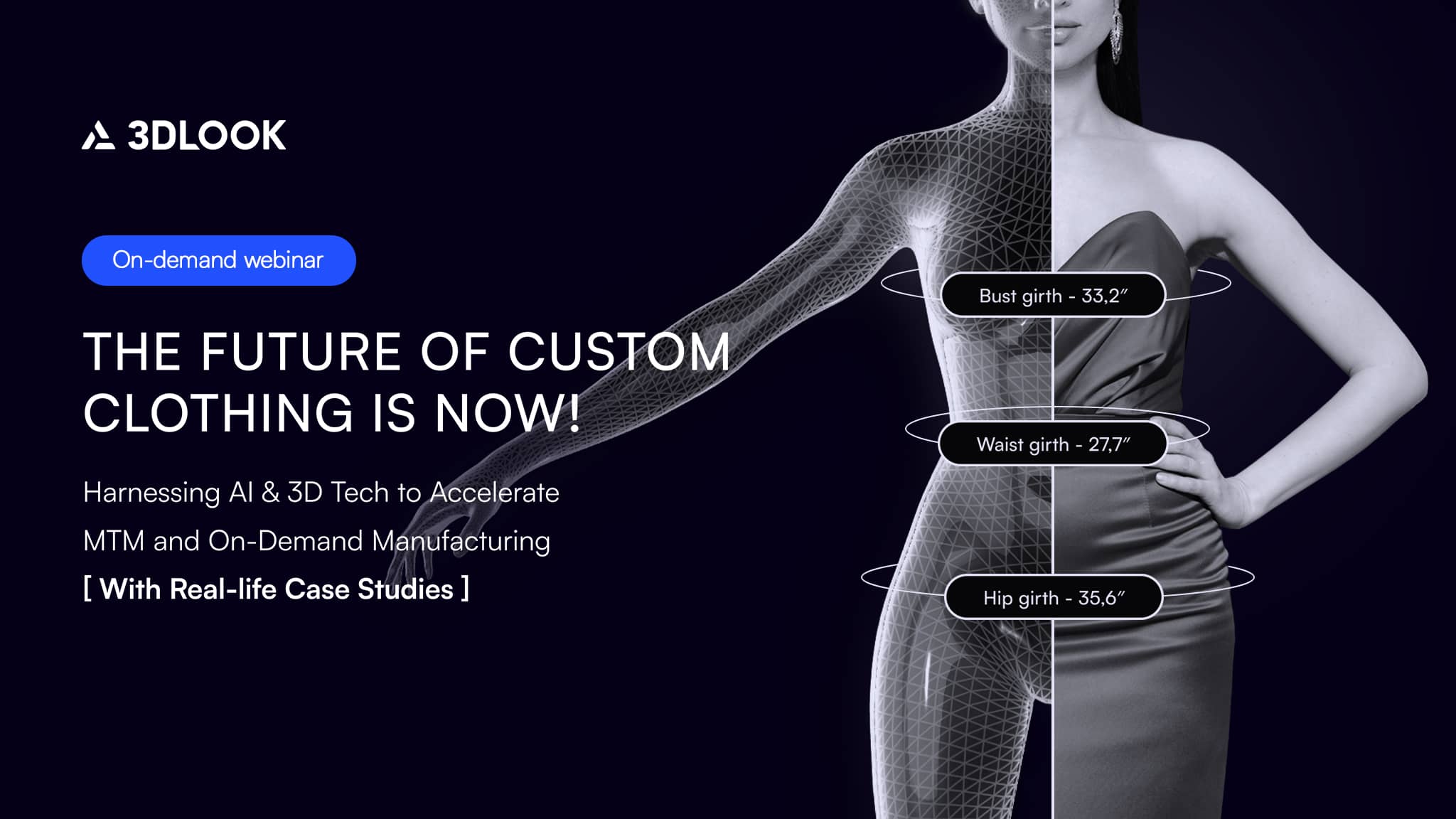
Crafting a Magnetic Online Presence
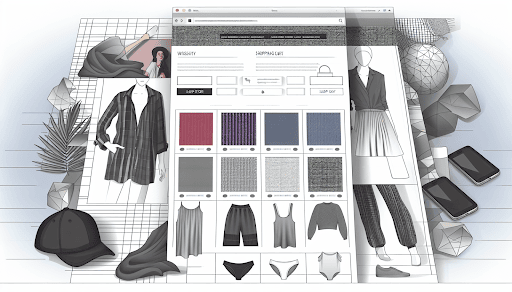
Your online presence is essential in the fashion industry, as it serves as your virtual catwalk to showcase your latest designs and connect with your followers. Look at Ralph Lauren’s website, a digital extension of their brand, exuding sophistication and refinement.
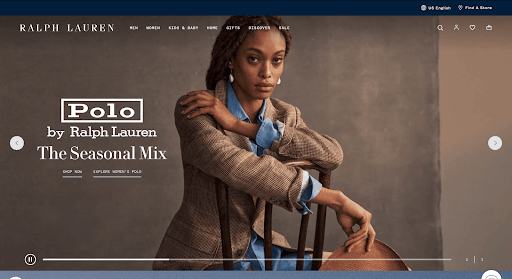
A well-crafted website plays a crucial role in any successful fashion marketing strategy, building an emotional connection with your desired audience while promoting growth for your clothing brand on the internet. It acts as a powerful tool to guide you toward prosperity within this highly competitive market.
Website Aesthetics and User-Friendly Design
A visually appealing website serves as a virtual invitation for potential customers to explore your brand further. Its high-quality visuals, well-coordinated color scheme, and user-friendly layout attract them. Aesthetics alone are not enough.
Like a tidy physical store, an intuitive web design enhances the browsing experience leading to increased customer involvement and satisfaction.
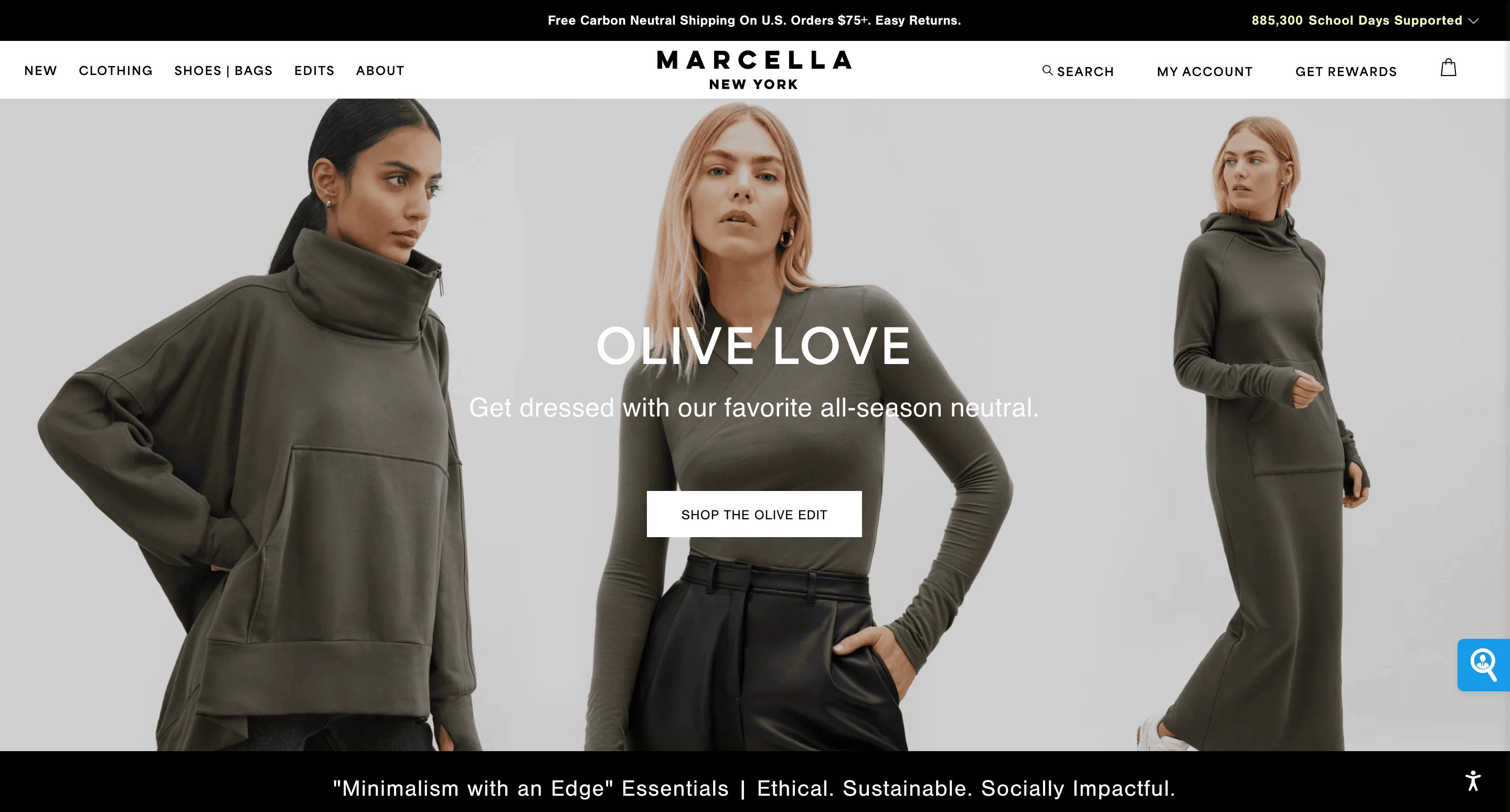
Mastering SEO for Fashion Retail
Visibility is essential in the fashion market. Utilizing SEO-optimized product descriptions and incorporating relevant keywords such as sunglasses, bags, belts, shoes, and men’s jewelry can significantly increase your product’s chances of being discovered on search engines. Creating compelling blog posts and other valuable content can improve your website’s rankings on search engine results pages (SERPs) while providing a better user experience for visitors.
Implementing these strategies is crucial to succeeding in the competitive fashion market by increasing visibility and improving online presence.
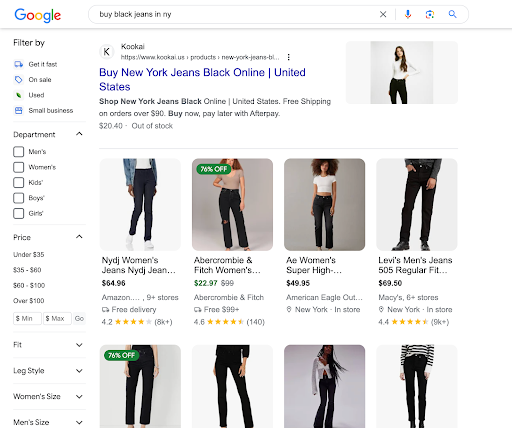
Enhancing User Experience
Have you ever given up on a website because it was too complex? Having a seamless and intuitive user interface is crucial in keeping your customers. A well-organized navigation system on your website and an easy checkout procedure minimize obstacles during the shopping experience, increasing customer contentment and promoting loyalty to your brand.
Cultivating a Robust Social Media Presence
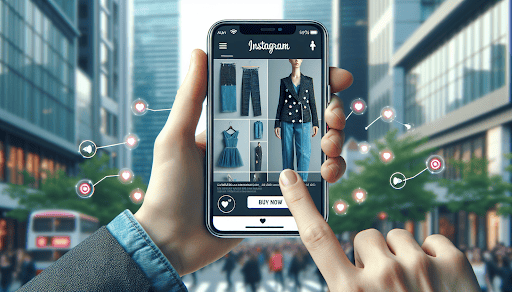
In the digital world, social media is a modern-day form of word-of-mouth marketing. It is where satisfied customers express their support for your brand, and potential new customers come across it.
Having an impactful presence on various social media platforms can greatly expand your audience reach, attract a fresh group of potential customers, and elevate brand awareness among them. This makes having a strong foothold in social media crucial for any business or brand to thrive in today’s competitive market.
“Social media significantly influences branding, offering a cost-effective method to establish a brand presence. It enables broad audience engagement without substantial financial investment. For instance, a t-shirt company starting in a garage can expand its reach through a personal Instagram account,” says Chris Ngo, owner of The Leverage Showroom, co-creator of Embellish NYC, Haus of JR, Crysp Denim, Lifted Anchors.
Instagram Mastery: From Shoppable Posts to Stories
Fashion marketers can use Instagram’s visually appealing platform and highly engaged audience to showcase their brand. With the ability to create shoppable posts, your Instagram feed becomes a portfolio of products and an online storefront.
Aside from shoppable posts, features like reels and stories on Instagram allow for a behind-the-scenes look at your fashion brand. This not only gives followers insight into your company principles but also fosters deeper connections with them through increased interaction.
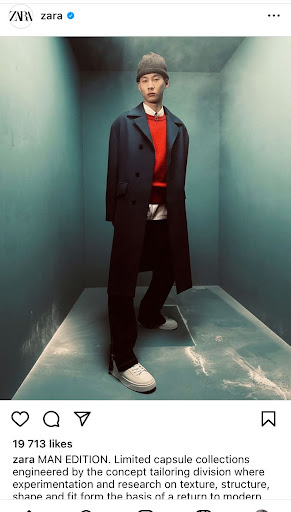
Facebook Engagement: Groups and Ads
Facebook serves as a virtual gathering place for individuals to stay in touch with their friends and preferred brands. Utilizing Facebook groups and targeted advertisements can effectively enhance your clothing brand’s exposure.
Creating compelling content and actively participating in specialized groups enables you to significantly boost traffic and attract potential customers to your e-commerce store.
Pinterest and TikTok: Capturing New Trends
Pinterest and TikTok have recently gained popularity, becoming the trendy new platforms to be on. While Pinterest is a place where individuals actively search for inspiration and concepts, TikTok features short yet captivating videos that instantly grab viewers’ attention.
Incorporating these social media sites into your marketing strategy can aid in capturing current trends while expanding your brand’s reach among different audiences.
Harnessing the Power of Content Marketing

The foundation of digital marketing lies in creating engaging and meaningful content. This is a powerful tool to convey your brand’s message, connect with your audience on a deeper level, and establish strong loyalty towards your brand. Whether through blogging, producing compelling video materials, or storytelling techniques, implementing effective content marketing strategies can significantly enhance brand awareness and drive sales for businesses.
Blogging for Fashion Brands
Similar to a fashion magazine tailored for your specific brand, a blog serves as an outlet where you can feature your newest collections, offer styling advice, and connect with your target audience. By consistently producing top-notch content on your blog, you can greatly boost your fashion label’s search engine optimization (SEO) and attract organic traffic to your website.
Video Content that Engages
Video content has the power to bring your brand’s story to life, just like a fashion show on a virtual runway. These brief yet compelling videos can immediately engage your audience by featuring new collections or providing an exclusive peek into your brand’s inner workings.
The Art of Storytelling
Utilizing storytelling in fashion branding allows your brand to form powerful emotional bonds with consumers, build credibility, and establish trust. Through captivating narratives about the craftsmanship, sustainability, or origins of your brand, you can evoke emotions and deeply engage your audience.
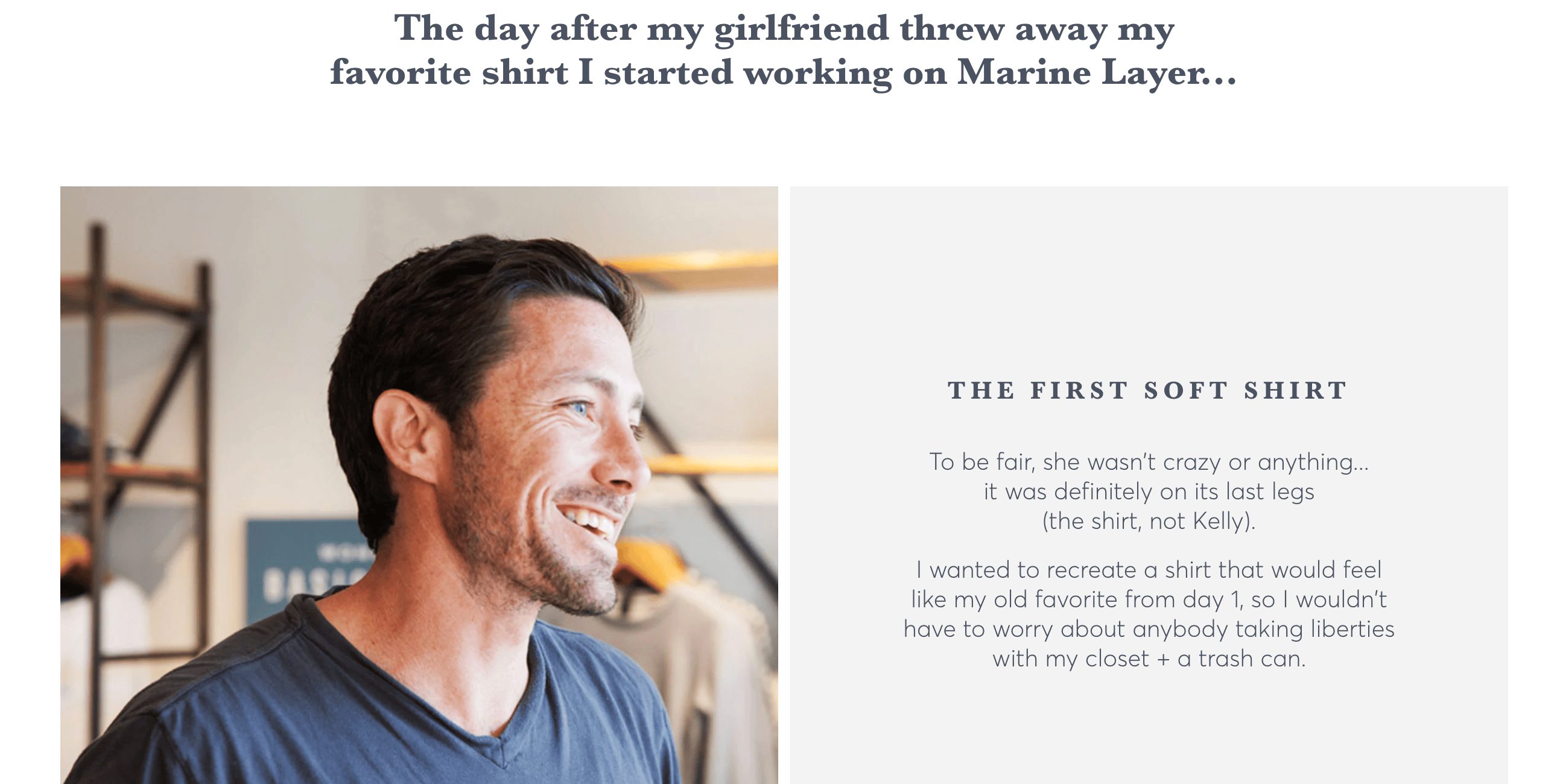
Email Marketing Campaigns That Convert
Utilizing email marketing allows for direct communication with your target audience, providing timely updates on new collections, sales promotions, and exclusive offers. This form of marketing can effectively increase conversion rates and maintain top-of-mind awareness of your brand among customers.
A carefully crafted email marketing campaign has the potential to greatly enhance conversions and ensure that your brand remains at the forefront of customers’ minds. By utilizing this outreach method, you have a direct line to keeping clients informed about current products or services.
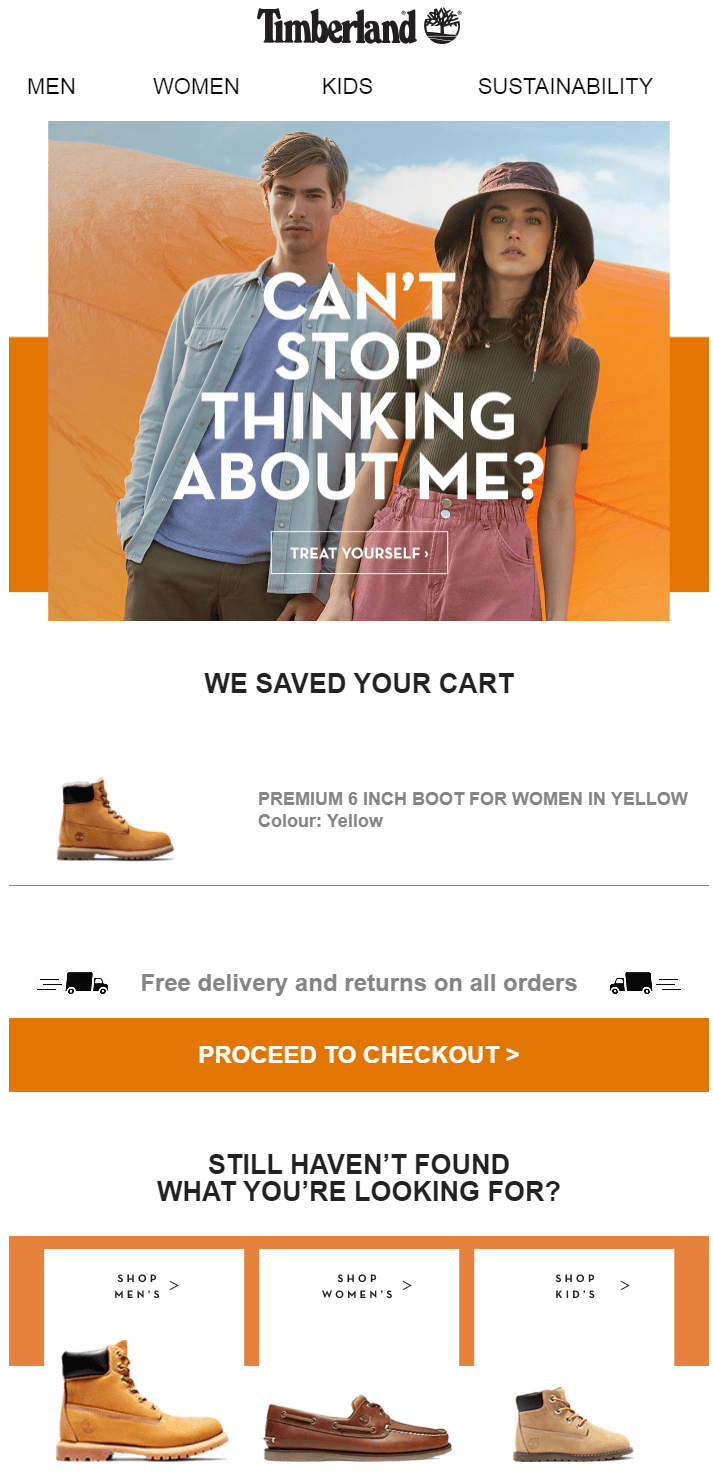
Crafting Compelling Email Content
To effectively promote your clothing brand through email, it is important to create engaging content that will grab recipients’ attention amidst a sea of emails in their inboxes. This can be achieved through captivating subject lines, visually appealing images, and interesting articles, which will help differentiate your brand from others. It’s crucial to keep all essential information intact while using alternative expressions and maintaining an appropriate tone throughout your message.
Segmenting Your Audience for Better Results
Segmentation is like having a dedicated fashion consultant for each customer. By customizing your email campaigns to appeal to distinct categories, you can enhance involvement and improve the effectiveness of your marketing efforts through emails.
Automating for Efficiency and Consistency
Email automation can be seen as having a virtual assistant that ensures your customers always receive the right message at the most suitable time. By utilizing automated emails, tailored to specific behaviors, it is possible to improve relevance greatly and ultimately lead to increased customer engagement and conversions.
Innovative Advertising Techniques

Effective advertising can greatly enhance the reach of your brand and increase its exposure in a short period. This could be achieved through various methods such as paid advertisements on social media platforms like Google, Meta, collaboration with influencers, or retargeting campaigns. With innovative approaches to advertising, there is potential for significant growth in both visibility and sales for your brand.
Paid Ads: Google and Social Media Platforms
Paid advertisements are equivalent to digital billboards as they effectively promote your brand to a larger audience. By utilizing platforms such as Google Ads and social media ads, like those on Facebook, you can tap into high search volumes and reach out to specific audiences at an affordable cost through precise targeting methods. These tactics prove particularly useful in boosting the visibility of brands online.

Influencer Collaborations: Micro to Macro
Working with influencers is a powerful way for your brand to connect and interact authentically with its desired audience. It’s like having a trusted friend who introduces your brand to their extensive following, providing an authentic outreach that resonates strongly with the target demographic. By collaborating with influential individuals, you can effectively promote your brand through word-of-mouth marketing among their loyal followers.
“A great example of a brand that understands social media is Calvin Klein. The brand enlists the ‘it’ models, celebrities, and influencers of the moment to promote its brand in a simple yet fresh way. It created a want in the market that would eventually turn into free press and advertising. And, as its latest campaigns feature a diverse cast of individuals, more and more people feel like they too can rock their Calvins with pride and confidence.”, says Madelyn Chung, founder and editor-in-chief of Represent Asian Project.
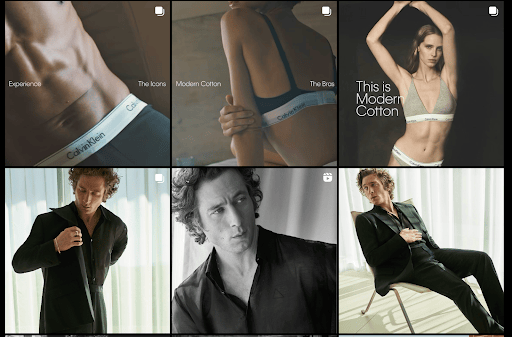
Retargeting Campaigns: Winning Back Lost Visitors
Using retargeting campaigns is a gentle way to remind your customers of products they are interested in. These campaigns involve showing personalized advertisements that highlight the items they previously viewed or added to their cart, allowing you to win back lost visitors and encourage them to complete their purchases.
Building Brand Advocacy Through UGC and Loyalty Programs
Digital word-of-mouth marketing, also known as brand advocacy, is established through various techniques such as user-generated content (UGC), loyalty programs and leveraging reviews and testimonials. These approaches effectively cultivate a dedicated customer following, transforming them into enthusiastic ambassadors of your brand.
Sparking UGC with Creative Campaigns
Utilizing user-generated content (UGC) is like having a personal stylist for every individual customer, drawing inspiration from the ever-changing landscape of pop culture. This strategy not only instills confidence in potential buyers but also encourages interaction and ultimately drives transactions. UGC establishes an authentic relationship that deeply resonates with customers by showcasing genuine individuals using your products.
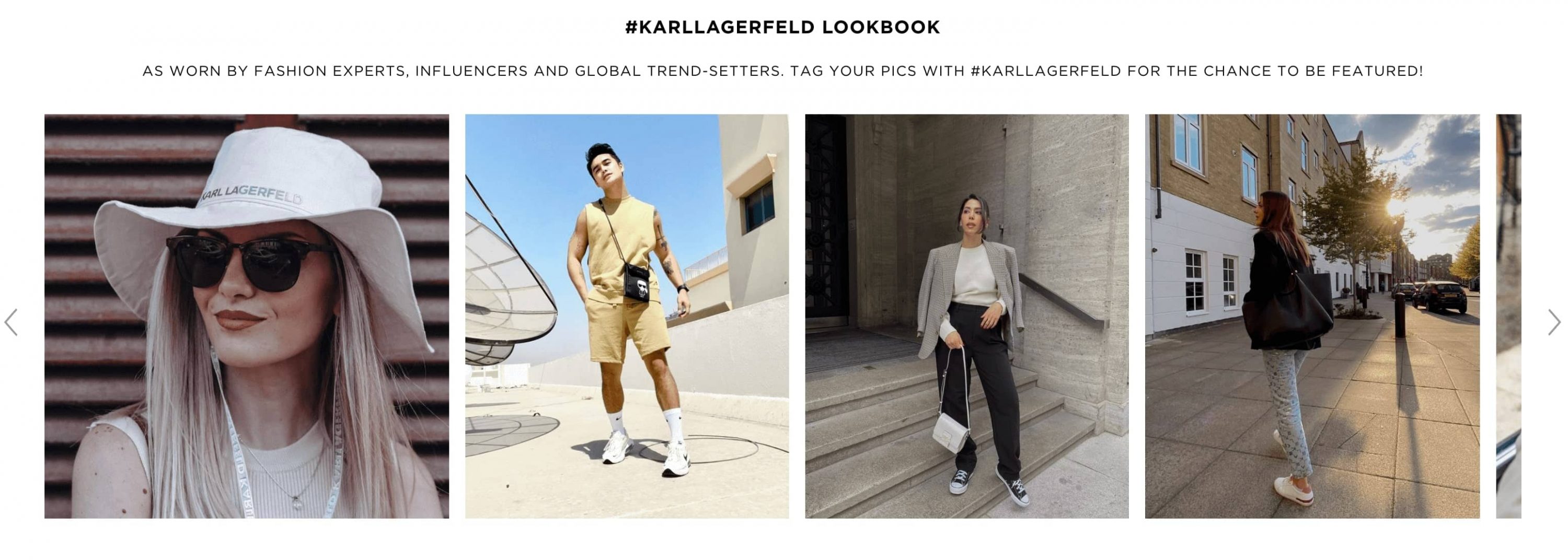
Designing a Rewarding Loyalty Program
A rewarding loyalty program can be seen as a gesture of appreciation towards your loyal customers. It motivates them to make repeat purchases, gathers important information for your business, and encourages ongoing engagement from these valuable customers.
Leveraging Reviews and Testimonials
The value of reviews and testimonials for a brand is similar to receiving a personal recommendation from a friend. These positive experiences instill confidence, influence future buying decisions, and prove the quality associated with your clothing brand.
Leveraging Fashion Technologies and Innovations to Enhance the Customer Experience
In today’s digital age, leveraging fashion technologies and innovations can be a game-changer for clothing brands. By embracing virtual fitting solutions like 3DLOOK’s Mobile Tailor and YourFit, you can offer your customers a personalized and convenient shopping experience.
Mobile Tailor utilizes advanced AI technology to capture and analyze 80+ body measurements from two photos taken with a smartphone. Beyond eliminating sizing uncertainties, this cutting-edge technology accurately generates a 3D model of the customer’s body, allowing for precise measurement taking. These measurements can be utilized for tailoring custom-made or bespoke patterns. Mobile Tailor offers the flexibility to acquire client measurements at any time and place, facilitating frequent updates.
Beyond being a mere tool for gathering measurements, Mobile Tailor serves as a dynamic catalyst for business expansion. By streamlining the measurement process, it allows your team to concentrate on customer relations and business growth. It enhances the efficiency of booking appointments, encourages engagement before purchases, and amplifies sales potential, all while ensuring a personalized experience that aligns with the expectations of custom-tailored or bespoke services.
👉 Discover how Baynes & Baker, an NYC-based luxury suit brand, transformed their business with 3DLOOK’s Mobile Tailor in this case study.
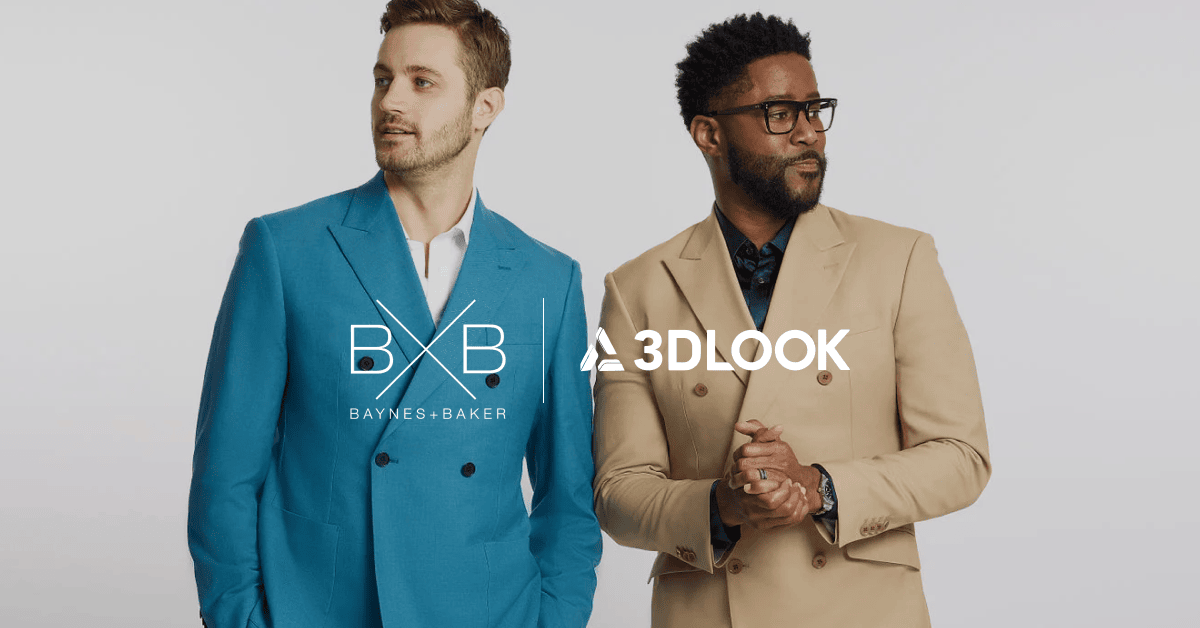
YourFit takes virtual fitting to the next level by providing customers with precise garment recommendations based on their 3D body model. In addition, the algorithms generate a geometrically correct virtual try-on that alters the shape of the body. By this, customers can checkout with a clear understanding of how a product will look and fit their body, helping them to find clothing they love and keep. Integrating this technology into your online store creates a more interactive and engaging shopping experience. This personalized approach increases customer satisfaction, reduces the likelihood of returns, and boosts brand loyalty.
Moreover, utilizing body data to customize clothing is an excellent way for your brand to stand out in a crowded market. The modern consumer values body inclusivity and seeks brands that recognize and cater to body shapes and sizes. By detailed body data, your brand can offer tailored clothing options that fit each individual’s unique body type, thus fostering a deeper sense of brand loyalty and appreciation among your customers. This approach elevates the customer experience and underscores your brand’s commitment to inclusivity and personalization.
In addition to customization, the importance of designing in 3D cannot be overstated. Utilizing 3D design tools streamlines the design-to-production pipeline, making it more efficient and cost-effective. This method significantly reduces the need for physical samples, lowering production costs and minimizing environmental impact. By adopting a 3D design process, your brand can rapidly iterate designs, make swift alterations based on customer feedback, and speed up the time to market. The agility and flexibility provided by 3D design tools are invaluable in today’s fast-paced fashion industry, ensuring that your brand stays ahead of the curve and responds promptly to emerging trends.
Imagine a customer browsing through your online store, looking for the perfect dress for an upcoming event. With the help of Mobile Tailor, they can simply take two photos of themselves using their smartphone and instantly receive accurate body measurements. This eliminates the need for guesswork and ensures that the chosen dress will fit them perfectly. Thanks to the AI-powered technology, the customer can even visualize how the dress will look on their unique body shape. This level of convenience and personalization will leave a lasting impression on the customer.
But it doesn’t stop there. YourFit takes the virtual fitting experience to a whole new dimension. By creating a 3D body model of the customer, the technology can recommend garments that are the right size and the perfect fit for their body shape. This immersive and interactive shopping experience helps customers make confident purchasing decisions and strengthens their emotional connection with your brand.
Furthermore, by implementing these fashion technologies, you can gather valuable data about your customers’ preferences and body measurements. This data can further personalize their shopping experience by offering tailored product recommendations or creating customized marketing campaigns. By leveraging the power of data-driven insights, you can continuously refine your offerings and stay ahead of the competition.
Staying Ahead of the Curve: Market Research and Trend Analysis
Continuously keeping up with the fast-paced fashion industry requires ongoing market research and trend evaluation. This helps shape your brand’s collections, designs, and promotional strategies to keep your brand current and competitive in the ever-changing fashion market.
Conducting Market Research
Market research serves as a guide, directing the path of your brand. It provides insight into your intended demographic, allows for recognition of competitors, and assists in perfecting marketing tactics. The market is better navigated with the thorough understanding gained through effective market research to inform strategic decision-making when it comes to the market.
“Fashion is all about identity and establishing a strong tone of voice that makes you stand out from other brands. My advice to new brands is to do market research and see who your competitors are. It is one of the most competitive markets.
“It’s also important for brands to understand what their target market is, what they want to provide their customers, and how to become the go-to place for fashion fans. Having a strong social media presence is a must—this can be a really cost-effective way of communicating with your target customer.”, says Nick Ede, CEO of EastofEden London.

Analyzing Trends in the Fashion World
Fashion trends are similar to the ever-changing seasons, constantly impacting the decisions of both designers and consumers. Keeping track of these shifts can provide valuable insight for clothing brands regarding their collections and designs, making it crucial for fashion businesses such as companies and individuals involved in designing to stay current on them.
Adapting to Change and Innovation
Surviving in the dynamic fashion industry requires adaptability to changes and advancements. Brands must adopt new technologies, platforms, and marketing strategies to remain competitive and stay relevant. Embracing these innovations can help a brand thrive in the ever-evolving fashion world.
Navigating the Competitive Landscape
In the world of fashion, there is intense competition as countless brands compete for customers’ spending. To stand out in this environment and establish your brand’s presence, it is crucial to identify its distinct selling points and carefully analyze competitors. By doing so, you can navigate the crowded market and differentiate your brand from others within the industry.
Identifying Unique Selling Propositions
Your brand’s Unique Selling Proposition (USP) is like the fingerprint of your business. It distinguishes you from other competitors in the market.
Discovering and focusing on your USP can set your brand apart and attract your desired target audience.
“You don’t need to place expensive print or television ads to market your clothing line. Collaborating with influencers and building a community on social media can be very effective in building business. Of course there are benefits to having an expensive PR firm and schmoozing fashion stylists to get your clothes on the backs of A-list celebrities, but you’ll be surprised how influential social media can be.”, states Sara Koonar, president of Platform Media + Management.
Final Thoughts
In conclusion, effectively marketing a clothing brand in 2025 demands a blend of innovative strategies, keen market insight, and a strong online presence. From leveraging the power of social media and content marketing to embracing the latest fashion technologies and understanding market trends, each aspect plays a vital role in distinguishing your brand in a crowded marketplace. Remember, the key to success lies not only in identifying and capitalizing on your unique selling proposition but also in continuously adapting to the evolving fashion landscape. By implementing these actionable steps and staying attuned to consumer needs and industry shifts, your brand is well-positioned to thrive and make a lasting impact in the fashion world.

